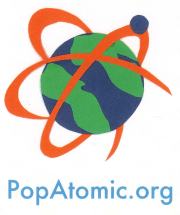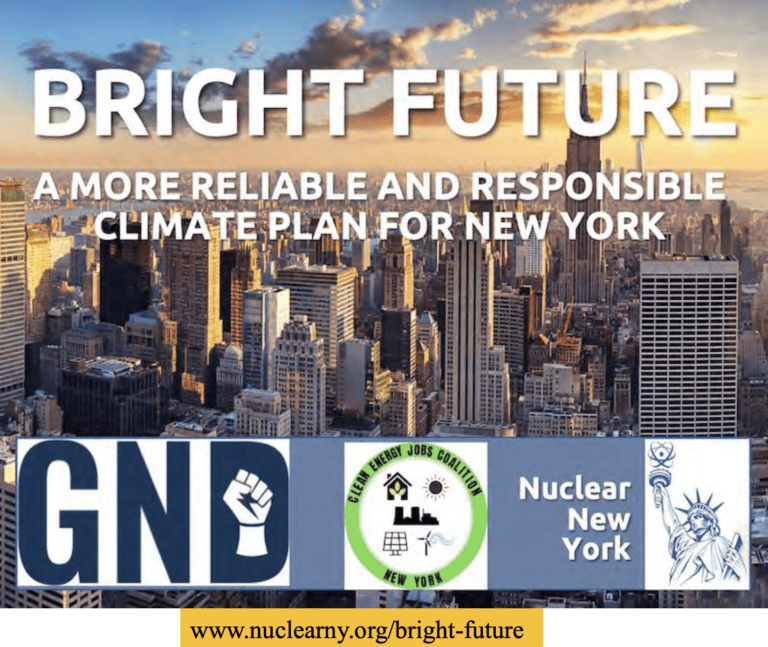Goodbye choir, hello public. Evangelizing nuclear knowledge
Yesterday I participated in a packed schedule full of prepared talks by well qualified, highly credentialed nuclear energy professionals. It was in a beautiful, high capacity venue at the Knoxville Convention Center.
Sound systems worked well, the MC kept us on schedule and there were several responsive assistants who provided microphones to those who had questions.
I was the final speaker of the day, beginning my talk at 5:00 pm on a day that began at 8:15 with only a 30 minute lunch break. Even so, there was a rather lively discussion during our Myth Busting panel.
The volunteers who put together the event did a great job of assembling the speaker line-up and were terrific hosts.
Now for the criticism. The organizing committee’s checklist apparently did not suffiently emphasize the importance of marketing and promotion. By the time I spoke, the vast lecture hall contained less pairs of ears than the Duke TIP class I taught last summer.
That class included 17 students and one teaching assistant.
There were a few more people earliers in the day, but “lightly attended” is a gentle description of the audience size. Attendees were not discouraged by cost or complex registration proceedures; the event was free and open to anyone interested in wandering in.
The good news is that I had the chance to ask a lot of questions. I recorded most of the talks and will probably publish several of them as atomic audio extra shows. They were quite informative and well done.
Though I initially signed up to participate in a science teacher workshop this morning, I think I’m going to play hooky. Yesterday evening, I found out that there is an annual event in town that might offer a chance to speak to some of the unconvinced.
The event is the Appalachian Public Interest Environmental Law Conference (APIEL), which is being held at the University of Tennesse College of Law today and tomorrow. According to the schedule, there will be at least 2-3 talks that attempt to convince people that nuclear energy is not a useful tool for supplying reliable energy without producing any greenhouse gas emissions.
Assuming that the people attending APIEL conference are sincerely interested in creating a cleaner, more just, and more prosperous world for all of us, I will do my small part to alter the conversation. I won’t attempt to shower with facts, I’ll just say a few words about why I’m so excieted about nuclear energy.
I only wish I had known about that event when I was packing for the trip. I would have made sure to include my Another Environmentalist for Nuclear Energy tee shirt.
Fortunately, I packed a PopAtomic Studio creation as a workout shirt. It’s high visibility green (because I often take long walks before sunrise) with an orange and green atomic symbol logo.
I’ll wear at least one of my Atomic Power to the People buttons, hand out a few Atomic Insights cards and bumper stickers and see if I can engage in a few challenging conversations.
I hope my NNSW hosts don’t mind that I decided to ditch them today.




Looking forward to your recounting of this evening’s “experience”. I’ve been collecting some key arguments these anti-nuclear ideologues tend to trot out. Some you might be aware of:
1. Nuclear energy is not sustainable — there’s only enough uranium to last 90 years, 200 tops.
Seriously. I heard this one from a presenter on the same stage as an economics professor and professor of astrophysics. Here in Denver. In the shadow of God’s own Rocky Mountains.
2. Proliferation aside, every nuclear power reactor is just another atom bomb waiting to go off.
3. What about Fukushima? Chernobyl? These people take the LNT thingy very seriously. Wander over to the comments on Will Boisvert’s recent BTI piece on the No Childhood Thyroid Cancer Epidemic in Fukushima. Teaching science to non-scientists with little or no interest in being taught is an uphill slog. (Try to focus on those with interest. Any interest at all.)
4. Have you heard of Helen Caldicott? You get these from professionals in the medical field, not necessarily doctors themselves. PAs, administrators, technicians. She’s “one of theirs”, and has street cred. (On their street, but that’s the path one chooses to tread.)
Most people are pretty good at factors of two or three or four. But after we run out of fingers and toes our eyes tend to glaze over. Factors of 20 million tend to be unfathomable, so we don’t even try to fathom them.
I try to prepare for these things by channeling Ben Heard at his best — I keep coming back to the last three minutes (5:00 on). Rod isn’t bad at it either. Good luck!
gentlemen, with all due respect, it is very difficult to defend nuclear energy knowing these new data http://www.bmj.com/content/351/bmj.h5359
Increased all cancers excluding leukaemia risk much worse than previously believed, “This new study-evaluation gives a rate of 4.8% excess deaths per 100 mSv (48% per 1000 mSv), excluding leukemia”
@jhon
That study found a weak correlation (at 90% confidence interval), but it did not bother to control for smoking or to segregate out solid cancers that have never been shown to be induced by radiation. It lumped all solid cancers together.
The researchers are all well known, stubborn defenders of the “no safe dose” assumption so when they report that their study was consistent with the LNT at low doses, they carefully did not report that it was also consistent with hormesis or with a threshold dose model because there is so much random variation in the data that you can “pick a line, any line” and make it fit the data.
And, as is almost always the case for radiation related epidemeology papers, they did not attempt to provide any biological explanation for the correlations they say they found.
@Rod
those aspects to which you refer would be responsible for the increased risk compared with the 15-Country E.Cardis The 2005 study?
in the Cardis study, 0,5% excess deaths per 100 mSv …
This new study-evaluation gives a rate of 4.8% excess deaths per 100 mSv ….
No.
From the abstract of Cardis et al. (2007):
0.97 ERR/Sv is a 9.7% increase in cancer deaths per 100 mSv.
If anything, this study calculated less risk than the 15-country study, but the error bars are so wide that it’s impossible to draw any meaningful conclusions from this.
@jhon
As Brian pointed out, this new paper does not report an increase compared to the 15 country study. (The results of that study were driven, in large part, by a data quality problem in the Canadian workers records. When that problem was discovered and reanalyzed, [http://nuclearsafety.gc.ca/pubs_catalogue/uploads/INFO0811_e.pdf] most of the increased risk reported in the 15 country study fell into the category of statistical insignificance.)
This new paper uses a selected slice of the same worker information as the prior study of nuclear workers. It is not really a new study, just a different way of looking at the same worker records.
I know this sounds like a bad joke but the DOE is publicly advocating Halloween costumes for kids as windmills and solar panels but the spokesperson nixes any support for nuclear reactor costumes. So much for any sliver of hope that DOE is wholeheartedly for nukes or climate control or positive nuclear power education in schools.
James Greenidge
Queens NY